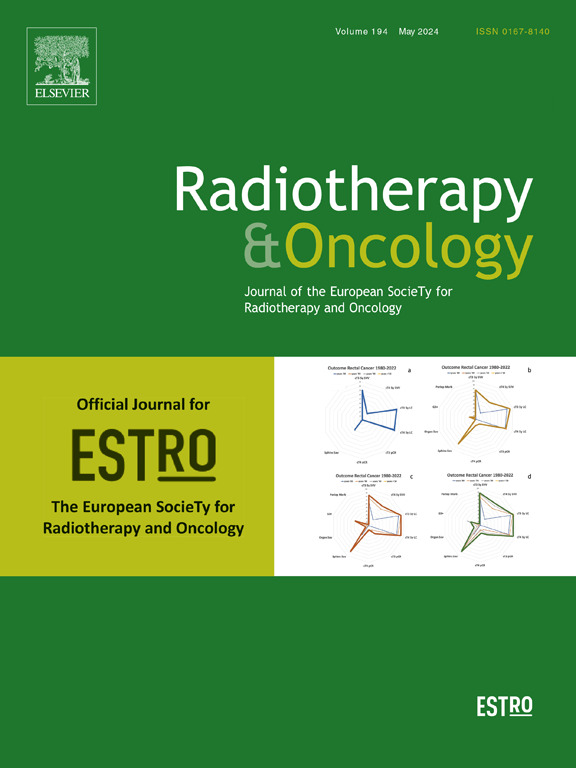PET and CT based DenseNet outperforms advanced deep learning models for outcome prediction of oropharyngeal cancer
IF 4.9
1区 医学
Q1 ONCOLOGY
引用次数: 0
Abstract
Background
In the HECKTOR 2022 challenge set [1], several state-of-the-art (SOTA, achieving best performance) deep learning models were introduced for predicting recurrence-free period (RFP) in head and neck cancer patients using PET and CT images.
Purpose
This study investigates whether a conventional DenseNet architecture, with optimized numbers of layers and image-fusion strategies, could achieve comparable performance as SOTA models.
Methods
The HECKTOR 2022 dataset comprises 489 oropharyngeal cancer (OPC) patients from seven distinct centers. It was randomly divided into a training set (n = 369) and an independent test set (n = 120). Furthermore, an additional dataset of 400 OPC patients, who underwent chemo(radiotherapy) at our center, was employed for external testing. Each patients’ data included pre-treatment CT- and PET-scans, manually generated GTV (Gross tumour volume) contours for primary tumors and lymph nodes, and RFP information. The present study compared the performance of DenseNet against three SOTA models developed on the HECKTOR 2022 dataset.
Results
When inputting CT, PET and GTV using the early fusion (considering them as different channels of input) approach, DenseNet81 (with 81 layers) obtained an internal test C-index of 0.69, a performance metric comparable with SOTA models. Notably, the removal of GTV from the input data yielded the same internal test C-index of 0.69 while improving the external test C-index from 0.59 to 0.63. Furthermore, compared to PET-only models, when utilizing the late fusion (concatenation of extracted features) with CT and PET, DenseNet81 demonstrated superior C-index values of 0.68 and 0.66 in both internal and external test sets, while using early fusion was better in only the internal test set.
Conclusions
The basic DenseNet architecture with 81 layers demonstrated a predictive performance on par with SOTA models featuring more intricate architectures in the internal test set, and better performance in the external test. The late fusion of CT and PET imaging data yielded superior performance in the external test.
求助全文
约1分钟内获得全文
求助全文
来源期刊

Radiotherapy and Oncology
医学-核医学
CiteScore
10.30
自引率
10.50%
发文量
2445
审稿时长
45 days
期刊介绍:
Radiotherapy and Oncology publishes papers describing original research as well as review articles. It covers areas of interest relating to radiation oncology. This includes: clinical radiotherapy, combined modality treatment, translational studies, epidemiological outcomes, imaging, dosimetry, and radiation therapy planning, experimental work in radiobiology, chemobiology, hyperthermia and tumour biology, as well as data science in radiation oncology and physics aspects relevant to oncology.Papers on more general aspects of interest to the radiation oncologist including chemotherapy, surgery and immunology are also published.
 求助内容:
求助内容: 应助结果提醒方式:
应助结果提醒方式:


